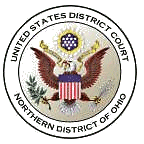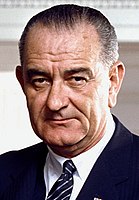Union Township, Ohio may refer to:
Washington Township, Ohio may refer to:
Wayne Township, Ohio, may refer to:
Harrison Township may refer to:

The U.S. District Court for the Northern District of Ohio is the federal trial court for the northern half of Ohio, encompassing most territories north of the city of Columbus. The court has courthouses in Cleveland, Toledo, Akron and Youngstown.
Jackson Township may refer to the following places:

The 2006 Ohio gubernatorial election was held on November 7, 2006, and was a race for the Governor and Lieutenant Governor of Ohio. Incumbent Governor Bob Taft could not run for re-election, because Ohio governors are limited to two consecutive terms in office. The election was held concurrently with a U.S. Senate election. The general election for governor pitted Ohio Secretary of State Ken Blackwell, the Republican nominee, against United States Congressman Ted Strickland of Ohio's 6th congressional district, the Democratic nominee. Their running mates were former Ohio Attorney General Lee Fisher on the Democratic ticket and State Representative Tom Raga on the Republican ticket.

This is a list of high school athletic conferences in Ohio, separated by Ohio High School Athletic Association (OHSAA) region. Some conferences have schools in multiple regions, and will be listed in all applicable regions. However, the conference information is on the region page where the most schools are classified in.

Highland Township is one of the twelve townships of Defiance County, Ohio, United States. The population at the 2020 census was 2,284.
Harrison Township, Ohio, may refer to:
Monroe Township, Ohio may refer to:
Perry Township, Ohio may refer to:
Jackson Township, Ohio, may refer to:

Lake Erie Basin consists of Lake Erie and surrounding watersheds, which are typically named after the river, creek, or stream that provides drainage into the lake. The watersheds are located in the states of Indiana, Michigan, New York, Ohio, and Pennsylvania in the United States, and in the province of Ontario in Canada. The basin is part of the Great Lakes Basin and Saint Lawrence River Watershed, which feeds into the Atlantic Ocean. 80% of the lake's water flows in from the Detroit River, with only 9% coming from all of the remaining watersheds combined. A littoral zone serves as the interface between land and lake, being that portion of the basin where the lake is less than 15 feet (4.6 m) in depth.

The U.S. state of Ohio first required its residents to register their motor vehicles and display license plates in 1908, although several cities within the state issued their own license plates from as early as 1902.

The 2010 Ohio gubernatorial election took place on November 2, 2010. Incumbent Democratic Governor Ted Strickland ran for re-election to a second term as governor and was opposed by former U.S. Representative John Kasich; both Strickland and Kasich won their respective primaries uncontested. The race between the two major candidates was prolonged and brutal, with both candidates employing various campaign surrogates to bolster their campaigns. Ultimately, Kasich defeated Strickland.
The electoral history of each district in the Ohio House of Representatives can be traced from 1966 to the present.
Since the OHSAA began basketball competition in 1922–23, many schools have decided to band together in conferences to help scheduling, added competition for titles and bragging rights, and oftentimes help determine seeding for the early rounds of the state tournament. Some conferences had been established for football-playing schools, and as schools added other sports, adopted those under the conference banner once enough schools started playing. Smaller schools often picked up basketball first, adding other sports later, and combined with other in-county schools to form County conferences. Most of these leagues were formed in the 1920s and early 1930s after the tournament was started, which is why quite a few lack a definitive starting date at this point in time.

The 1968 United States presidential election in Ohio took place on November 5, 1968. All 50 states and The District of Columbia were part of the 1968 United States presidential election. Ohio voters chose 26 electors to the Electoral College, who voted for president and vice president.











